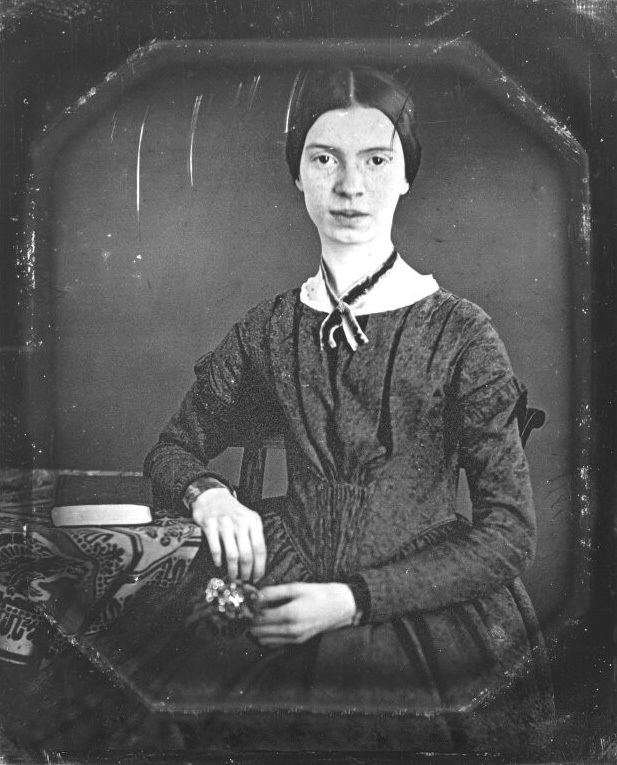 | ||
"Because I could not stop for Death" is a lyrical poem by Emily Dickinson first published posthumously in Poems: Series 1 in 1890. The persona of Dickinson's poem meets personified Death. Death is a gentleman caller who takes a leisurely carriage ride with the speaker to her grave. According to Thomas H. Johnson's variorum edition of 1955 the number of this poem is 712.
Contents
Summary
The poem was published posthumously in 1890 in Poems: Series 1, a collection of Dickinson's poems assembled and edited by her friends Mabel Loomis Todd and Thomas Wentworth Higginson. The poem was published under the title "The Chariot". It is composed in six quatrains with the meter alternating between iambic tetrameter and iambic trimeter. Stanzas 1, 2, 4, and 6 employ end rhyme in their second and fourth lines, but some of these are only close rhyme or eye rhyme. In the third stanza, there is no end rhyme, but "ring" in line 2 rhymes with "gazing" and "setting" in lines 3 and 4 respectively. Internal rhyme is scattered throughout. Figures of speech include alliteration, anaphora, paradox, and personification. The poem personifies Death as a gentleman caller who takes a leisurely carriage ride with the poet to her grave. She also personifies immortality. The volta (turn) happens in the fourth quatrain. Structurally, the syllables shift from its constant 8-6-8-6 scheme to 6-8-8-6. This parallels with the undertones of the sixth quatrain. The personification of death changes from one of pleasantry to one of ambiguity and morbidity: "Or rather--He passed Us-- / The Dews drew quivering and chill--" (13-14). The imagery changes from its original nostalgic form of children playing and setting suns to Death's real concern of taking the speaker to afterlife.
Critique
In 1936 Allen Tate wrote, "[The poem] exemplifies better than anything else [Dickinson] wrote the special quality of her mind ... If the word great means anything in poetry, this poem is one of the greatest in the English language; it is flawless to the last detail. The rhythm charges with movement the pattern of suspended action back of the poem. Every image is precise and, moreover, not merely beautiful, but inextricably fused with the central idea. Every image extends and intensifies every other ... No poet could have invented the elements of [this poem]; only a great poet could have used them so perfectly. Miss Dickinson was a deep mind writing from a deep culture, and when she came to poetry, she came infallibly.”
Musical settings
The poem has been set to music by Aaron Copland as the twelfth song of his song cycle Twelve Poems of Emily Dickinson. And again, by John Adams as the second movement of his choral symphony Harmonium, and also set to music by Nicholas J. White as a single movement piece for chorus and chamber orchestra. Natalie Merchant and Susan McKeown have created a song of the same name while preserving Dickinson's exact poem in its lyrics.
Some wags have pointed out that the poem may be sung to "The Yellow Rose of Texas," which has the same meter. It can also be sung to the theme song of the 1960's television show, "Gilligan's Island".
